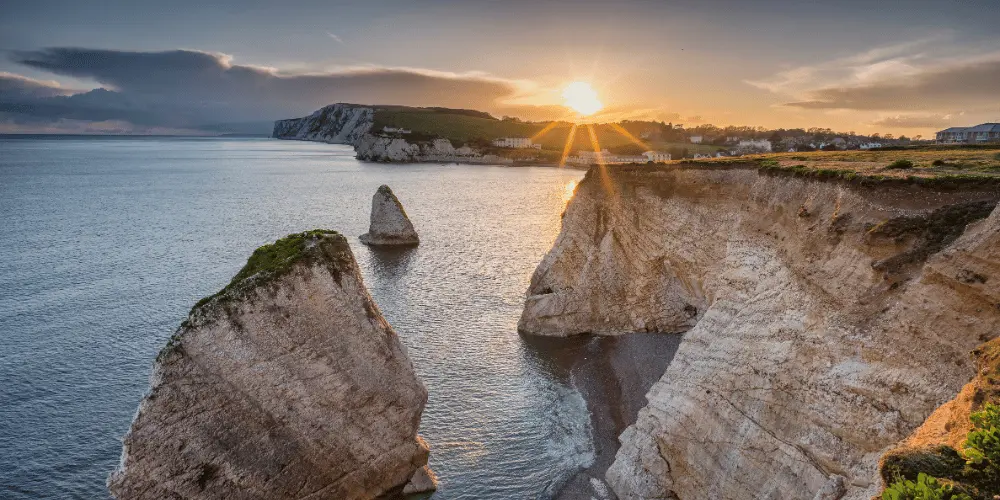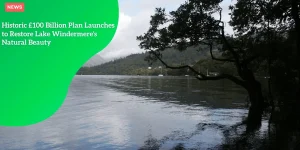River Waveney Travel Guide: From Ancient Mills to Wildlife Sanctuaries
Anúncios
Introduction to the River Waveney
Stretching 59 miles along the Norfolk-Suffolk border, the River Waveney is a serene gem offering a blend of natural beauty and historical significance.
It originates at the Redgrave and Lopham Fen, a nature reserve filled with diverse wildlife, before winding through East Anglia and meeting the River Yare near Great Yarmouth.
Anúncios
From Source to Sea
The journey of the Waveney begins at the Redgrave and Lopham Fen.
This area is known for its rich biodiversity, offering refuge to myriad species such as otters, kingfishers, and water voles.
Anúncios
As the river meanders through the fen and across the tranquil East Anglian landscape, it passes through charming villages and idyllic countryside, creating a picturesque route that appeals to nature lovers and history enthusiasts alike.
Historical and Cultural Significance
The Waveney is immortalized in Roger Deakin’s celebrated book “Waterlog,” which significantly contributed to the wild swimming movement in Britain.
Deakin’s passion for swimming in natural waters led him to explore and document his adventures along the Waveney.
His vivid accounts turned the river into a storied waterway that captures the imaginations of those seeking to connect with nature.
A Natural Sanctuary
Along the river’s length, visitors can find willow-shaded bends and secret pools perfectly suited for wild swimming and immersion in nature’s tranquility.
The gentle flow and secluded spots offer an enchanting escape from the hustle and bustle of modern life, as described evocatively by Deakin in his writings.
With each season, the Waveney changes its appearance, offering year-round beauty.
From blooming spring landscapes to the warm hues of autumn, the river’s diverse habitats support vibrant ecosystems that entice both wildlife enthusiasts and casual observers.
As we dive deeper into the rich historical heritage and natural wonders of the River Waveney, remember that every bend in the river offers a new adventure waiting to be discovered.
Historical Heritage
Role of Historic Drainage Mills
The River Waveney is rich in history, and one of the most significant aspects is its historic drainage mills.
These mills were essential for the marshland management as they played a crucial role in draining the surrounding marshlands, making the area suitable for agriculture.
The landscape along the Waveney is dotted with these robust structures, standing as sentinels that embody the region’s industrious past.
While some mills have not stood the test of time and nature, others continue to dominate the scenery.
The Herringfleet smock drainage mill, being the oldest in the Broads, is one of the most celebrated landmarks.
This mill, with its wooden sails and classic design, is a must-visit for those interested in the engineering marvels of the past.
Bungay’s Enigmatic Castle and Black Dog Legend
Another symbol of the Waveney’s rich historical heritage is Bungay’s 12th-century castle.
This ancient structure offers a glimpse into the turbulent history of the region. The castle grounds are perfect for a leisurely exploration, where one can imagine the fortifications and battles that once took place here.
Bungay is also famous for the legend of the Black Dog, known as Black Shuck.
According to local tales, this ghostly hound roamed the streets of Bungay, instilling fear into the hearts of those who saw it.
The story goes that Black Shuck appeared in the church during a storm, killing a few people and leaving marks, which are still visible today.
This legend adds an eerie but fascinating layer to the town’s historic fabric.
As you delve deeper into the area, the scenic landscapes and diverse wildlife of the Waveney will continue to enchant you.
Natural Wonders and Wildlife
Diverse Wildlife Along the Waveney
The River Waveney is a haven for a variety of wildlife.
Otters can often be seen basking on floating logs, embodying the magic of this serene waterway.
Kingfishers frequently add a flash of vibrant color as they dart across the river in pursuit of fish.
Another noteworthy resident is the water vole, a species that has found a safe refuge along the Waveney’s banks, unlike many other parts of the UK.
Seasonal Transformations
The River Waveney undergoes stunning transformations throughout the year.
In winter, the landscape is cloaked in an almost mystical white veil, with frost-kissed reeds and ghostly drainage mills creating a serene atmosphere.
As spring approaches, the river comes alive with fluffy willow seeds floating on the water, mingling with the vibrant colors of new blossoms.
Summer brings an orchestra of birdsong and the buzz of life, while autumn paints the landscape in rich, warm hues for a tranquil and reflective season.
Secret Pools and Willow-Shaded Bends
Scattered along the course of the Waveney are secret pools and sandy beaches, tucked away like hidden treasures.
These secluded spots provide perfect places for a serene dip or a peaceful picnic, offering a glimpse into the enchanting retreats that inspired Roger Deakin in his writings.
The willow-shaded bends of the river further enhance its charm, creating enchanting nooks that captivate the adventurous spirit.
Exploring these natural wonders allows visitors to fully immerse themselves in the River Waveney’s serene beauty and rich biodiversity, making it a destination that seamlessly blends history, nature, and adventure.
Activities and Adventures
Cycling Routes Covering 104 Miles of River Valleys
For those who love two-wheeled adventures, the River Waveney offers a picturesque cycling experience.
This 104-mile cycling route provides gentle river valleys and tranquil views. Start your journey conveniently from Diss railway station.
Pedal through charming villages like Bungay and Beccles, and marvel at the Oulton Broads, where marshlands and historical monuments await your discovery.
The landscape is refreshingly devoid of heavy development, ensuring an uninterrupted, serene ride.
Wild Swimming Locations and Kayaking Opportunities
The River Waveney is a haven for wild swimming enthusiasts. Inspired by Roger Deakin’s famous swims, the river offers secret pools and sandy beaches perfect for invigorating dips.
For those seeking a more dynamic water activity, kayaking from Redgrave and Lopham Fen to the Geldeston Locks reveals the river’s natural beauty and thriving wildlife.
You might spot an otter or a flash of brilliant blue as a kingfisher dives for fish.
Walking Trails Along Angles Way from Knettishall Heath
If you prefer exploring on foot, the Angles Way trail provides a rewarding path for walkers.
This route stretches from Knettishall Heath to Great Yarmouth and aligns with the river’s course at various points.
Along the way, enjoy tranquil pauses by willow-shaded bends and historic drainage mills, making it an ideal choice for those seeking to immerse themselves in the serene landscapes of the Waveney.
Embarking on these activities promises to offer new experiences and cherished memories along the River Waveney.
Local Culture and Cuisine
Craft Breweries and Indie Cafes
Exploring the River Waveney means immersing yourself in the local culture, and what better way to do so than sampling the region’s craft beers and coffee?
Start in Harleston at Ampersand Brew Co., where you can savor inventive craft beers like the refreshing Bidon pale ale and the vibrant Basil Blush with raspberry.
This stop provides not just a great pint, but also a glimpse into the flourishing local beer scene.
For coffee enthusiasts, the Earsham Street Café in Bungay is a must-visit.
Their Ethiopian coffee blend offers an invigorating caffeine fix, perfect for fueling your adventures along the river.
Historic Pubs and Inns
The River Waveney is dotted with historical pubs that serve as cozy retreats after a day of exploring.
The Geldeston Lock Inn stands out for its rustic charm, live music, and welcoming atmosphere.
Located near the river, it’s an ideal spot to unwind with a pint in hand after kayaking or cycling.
Local Delicacies
As you explore the charming villages along the River Waveney, you’ll find independent cafés and eateries offering locally sourced delicacies.
From fresh seafood to homemade pastries, these culinary spots bring the flavors of the region to life.
Each unique establishment adds a layer of richness to the cultural tapestry of the Waveney Valley.
Delighting in these local gems truly enriches your travel experience, offering glimpses into the heart of the community and its traditions.
Keep these spots in mind as you journey through the Waveney, savoring every taste along the way while remaining mindful of conserving the natural beauty that surrounds you.
Conservation and Future
Ongoing Initiatives to Protect Wildlife and Water Quality
To preserve the diverse species inhabiting the River Waveney, several ongoing initiatives are dedicated to maintaining water quality and wildlife habitats.
These efforts involve:
- Monitoring pollution levels to keep the water clean
- Promoting organic farming practices nearby to reduce chemical runoff
- Enhancing sewage treatment facilities to minimize harmful discharges
Conservationists are also focused on supporting iconic species like otters, kingfishers, and water voles, which are vital to the river’s ecosystem.
By doing so, they help ensure the river remains a haven for biodiversity for generations to come.
Responsible Tourism Practices and Visitor Guidelines
As the River Waveney gains popularity, responsible tourism has become essential to protect this fragile environment.
Visitors are encouraged to:
- Respect local wildlife and avoid disturbing animals
- Stay on designated paths to minimize habitat disruption
- Properly dispose of waste to prevent littering
Additionally, visitors are advised to avoid swimming in the river 48 hours after heavy rainfall to minimize exposure to pollution runoff, ensuring their safety and the river’s health.
Preservation Efforts for Historical Features and Natural Habitats
Preserving the historical features and natural habitats along the Waveney is a priority.
Local organizations and volunteers work tirelessly to:
- Clean the riverbanks and remove debris
- Plant native species to support local flora
- Restore natural habitats to encourage biodiversity
Preservation efforts also extend to maintaining historic drainage mills like the Herringfleet smock drainage mill.
These structures offer a glimpse into the region’s past and add to the river’s picturesque charm.
With these conservation and preservation measures in place, the River Waveney continues to be a cherished natural and historical treasure.







